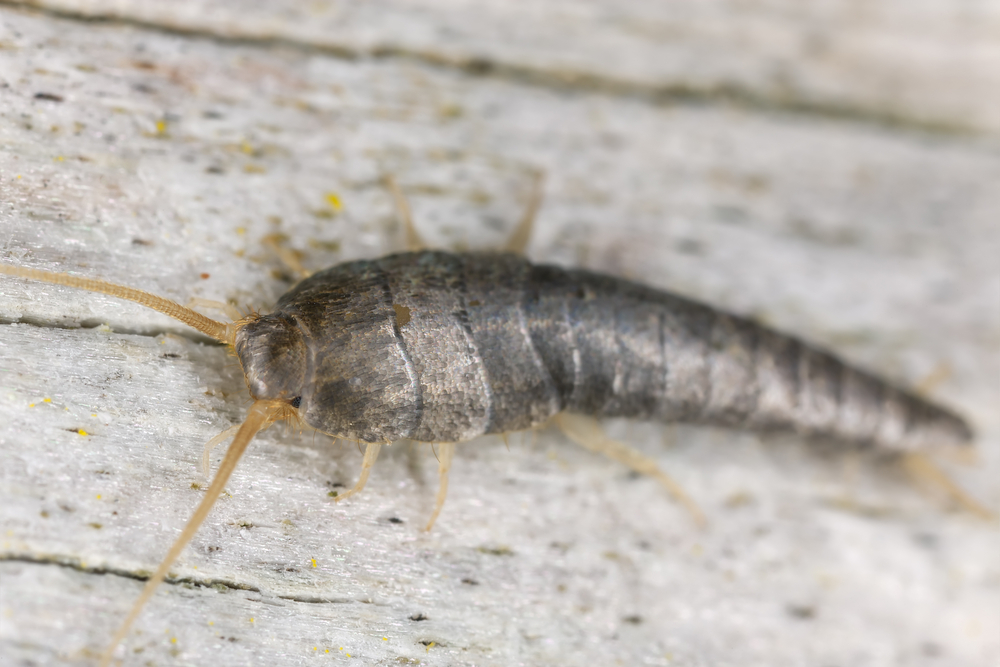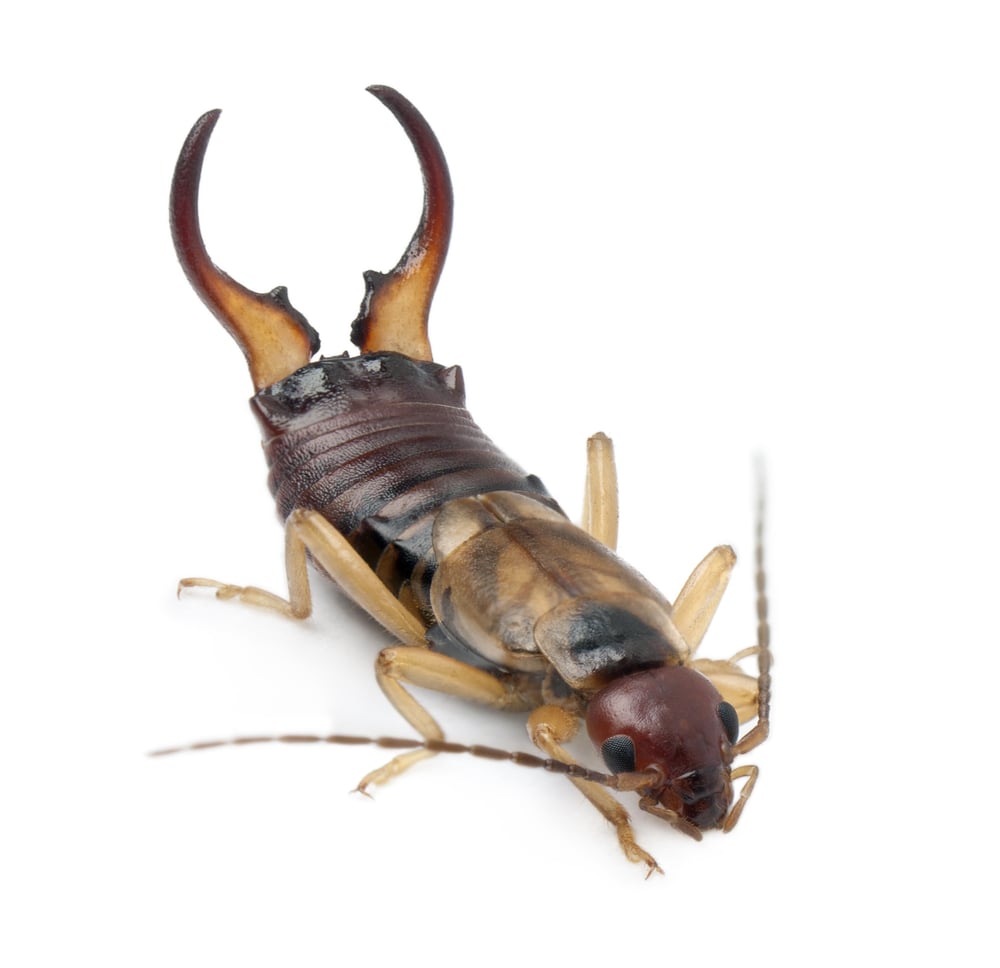
Description: Silverfish are always wingless and are silvery to brown in color because their bodies are covered with fine scales. They are generally soft bodied. Adults are up to 3/4 inch long, flattened from top to bottom, elongated and oval in shape, have three long tail projections and two long antennae.
Life Cycle: Females lay eggs continuously after reaching the adult stage and may lay over 100 eggs during her life. Eggs are deposited singly or in small groups in cracks and crevices and hatch in 3 to weeks. Silverfish develop from egg to young to adult within 4 to 6 weeks and continue to molt throughout their life. Immature stages appear similar to adults except they are about 1/20 of an inch long when they first hatch and whitish in color, taking on the adults’ silver coloring as they grow. They are long-lived, surviving from two to eight years.
Habitat, Food Source(s): Silverfish are chewing insects and general feeders but prefer carbohydrates and protein, including flour, dried meat, rolled oats, paper and even glue. They and can survive long periods, sometimes over a year, without food but are sensitive to moisture and require a high humidity (75% to 90%) to survive. They also have a temperature preference between 70 and 80 degrees F. They are fast running and mostly active at night and generally prefer lower levels in homes, but may be found in attics.
Damage: Primarily a nuisance pest inside the home or buildings; can contaminate food, damage paper goods and stain clothing; medically harmless. Many of their habits are similar to cockroaches and they appear to be more common as household pests in drier parts of the state. Occasionally damage book bindings, curtains, wallpaper.
Earwig:
The name earwig is derived from an old superstition that these insects enter human ears and work their way into the brain where they become attached and eventually drive their host to madness and/or death. This fairy tale has no foundation and is entirely false. Earwigs cause no physical harm to man. Certain species have scent glands from which they can squirt a foul-smelling liquid. This is probably used for protection; however, it makes them very unpleasant when crushed.

Because of their nighttime activity, they remain in the soil or under debris during the day. Heavily thatched lawns or mulched flower beds are among their preferred daytime habitat. At night they collect in large numbers around street lights, neon lights, lighted windows or similar locations where they search for food. They also forage on food scraps or dead insects.

